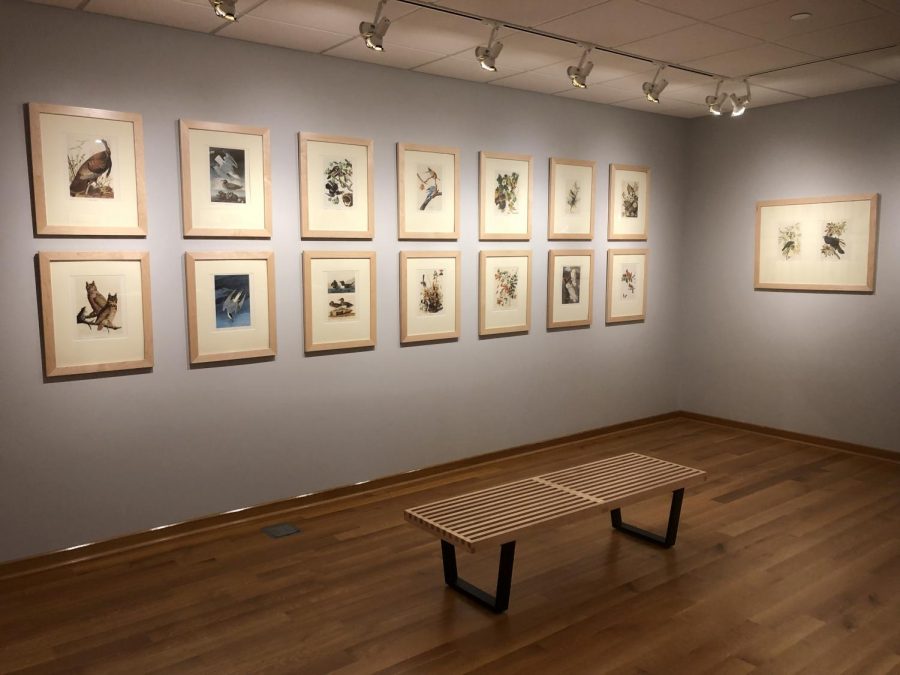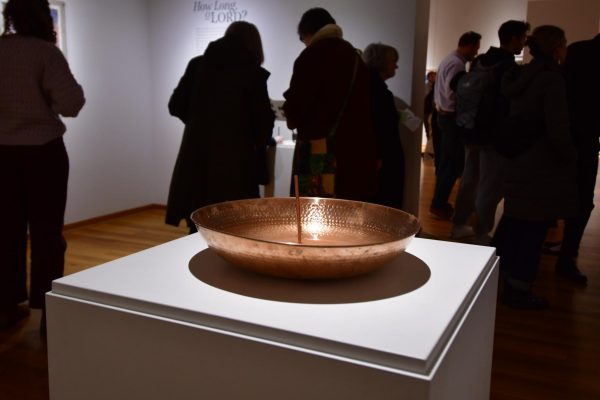The Details of Stillness: John James Audubon at the Center Art Gallery
“American Birds” in the Center Art Gallery
What’s so exciting about the world of birds? We don’t think about it that much; they fly into our windows. They relieve themselves on our car windshields. And they wake us up early with their morning calls. They seem more of a nuisance than anything. However, at the Center Art Gallery, one exhibit of paintings brings these animals into a world of vibrancy and majesty.
The artist John James Audubon was fascinated by the creatures and the world they inhabited; between 1827 and 1838, he produced a set of 435 paintings depicting several types of birds in their natural habitats. Through these paintings, collectively titled “American Birds,” Audubon gained great fame in England and Scotland, eventually becoming lionized as “the American woodsman.” While Calvin University possesses a complete set, only a select few have been chosen for display.
What’s striking about Audubon’s paintings is how understated they are. There’s no attempt to make them eye-catching; very few of the paintings have illustrated backgrounds. Soft colors are used so that nothing jumps out. Nothing about the paintings screams “Notice me” — and yet that is what makes them so noticeable.
With the simple layouts and lack of backgrounds, the viewer’s eyes are drawn to the minute details Audubon put into every one of his paintings. Each feather and leaf brims with life and movement. The eyes seem to see, and the beaks look smooth and tangible. The use of simple browns and greens for the flora makes the animals pop out even more, as jet black feathers and bright red bellies perch on top of these muted backgrounds.
However, despite this adherence to reality, there’s something otherworldly about “American Birds.”
There’s a disconnect beyond the fact that it’s watercolors behind a glass frame. The liveliness of the images creates a kind of drama that we don’t see in reality. If we see a bird in flight, we often can’t see the rippling of feathers. If we see a bird chirping, we can’t see all of the muscles or the expression of the animal before the beak swiftly closes. What Audubon has done with “American Birds” is allow us a glimpse at the majesty and liveliness of nature. Each painting is a snapshot of life, compacting all of its beauty and presence into a single frame.
The display of “American Birds” is like walking through the woods. The branches, reeds, and tall grass almost blend together on the wall from their separated frames. It makes one environment out of many parts, leaving the viewer staring at a forest that is both mysterious and familiar. Frozen on their perches or mid-flight, each bird is given poise and regality we never get to see in nature.
But thanks to Audubon’s paintings, we get to see them through his eyes: elegant, beautiful and alive.






